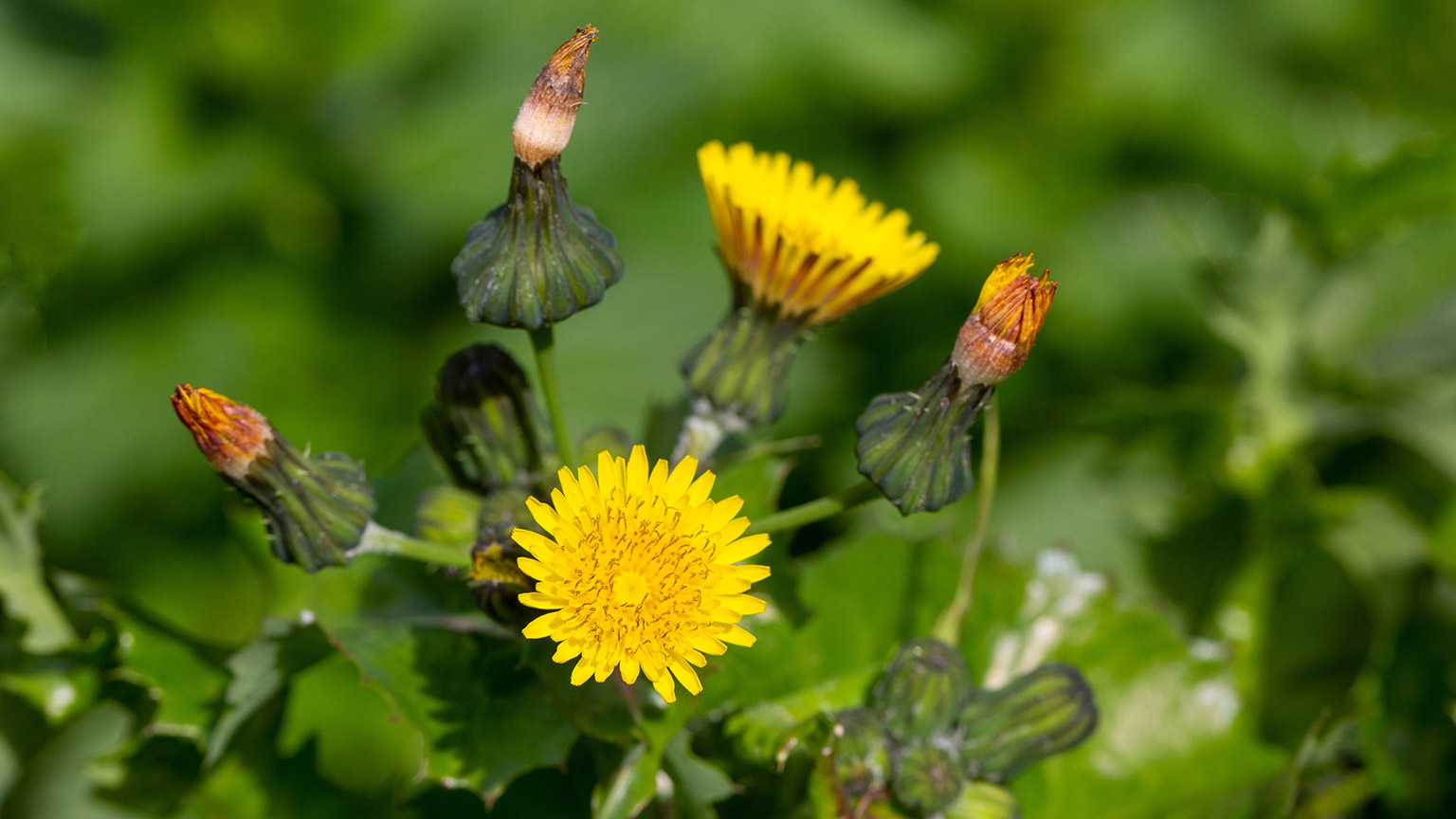To some, this may look like a weed. To others, it looks like the makings of dinner, and/or medicine. It's puha, also called common sowthistle (Sonchus oleraceus), and can be made into a delicious boil-up with beef and dumplings!
Other plants are those that we haven’t deliberately planted or specifically cared for. They might include the camellia in the corner of the section that the previous owners planted which you just leave alone, or a pittosporum that has self-seeded near the deck. Alternatively they could be the agapanthus that is growing in the ditch.
In this topic we divide these into good plants and problem plants.
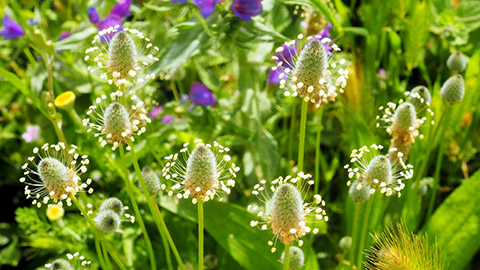
This is an extremely common plant that grows all over New Zealand. Some might pull it out as soon as they see it in their garden, but others allow flowering plantain (Plantago lanceolata) to thrive. The stem juice can be used to stop the itch from sandflies, chicken pox, and other skin irritations.
Good plants are the ones we want to keep, whether or not we planted them. Some gardeners refer to these as volunteers.
They include:
- our chosen (desirable) plants
- other good plants, such as:
- companion plants that may have self-seeded
- plants that form habitats for animals that aren’t pests.
In this sense, we might be happy to see a pumpkin (Cucurbita spp.) seed sprouting from compost laid around the base of a fruit tree. Even though we didn’t plant it there, we might be thrilled to see it, knowing that it will soon grow large leaves that will shade out the grass.
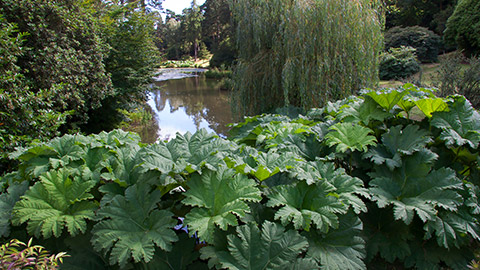
The Chilean rhubarb (Gunnera tinctoria) has been identified as a weed by Doc.govt.nz because it forms large clumps that shade out native plants.
As we’ve mentioned earlier, weeds are just plants growing where you don’t want them to grow. However, in this subtopic, we’re focusing on weeds that cause problems. In the pumpkin example, above, we might be better off to declare that “this isn’t a weed.”
If we take this approach, our gardens will offer greater biodiversity and we’ll only need to concern ourselves with controlling problem plants. The weeds we’ll focus on here are ones that are problematic for one or more reasons.
These can:
- be noxious weeds/pest plants
- compete with desirable plants for water or nutrients
- shade out desirable plants
- have undesirable features, such as toxicity (are poisonous); prickles, barbs, or thorns; spread very rapidly; give off a bad smell; or attract undesirable animals.
Let’s take a look at some of these in more detail.
Pest plants
As mentioned in Module 2, some weeds are considered noxious weeds or pest plants and may be regulated by your council. Different regional councils (or unitary authorities) have different plant pest lists.
Become familiar with those plants that are listed as pest plants in your area.
If you spot a pest plant, get in touch with your local council.
If you see or hear people trying to propagate any of these plants, speak up. In many cases, people aren’t aware that, for example, giving a friend some agapanthus (Agapanthus praecox) to grow at their house is prohibited in some parts of Aotearoa.
For all other types of plants, the decision is more subjective. If it’s your garden, in most cases you decide what is a weed, however, it is worth carefully considering the following types of plants.
Toxic plants
![[ADD IMAGE'S ALT TEXT]](/sites/default/files/Tutu%20.jpg)
Tutu (Coriaria arborea var. arborea) is highly toxic.
Some plants have structures that are toxic (contain a poisonous substance or has the potential to cause harm or death if eaten).
Levels of toxicity vary, but some examples are:
- Karaka (Corynocarpus laevigatus): The kernel of the karaka fruit is highly poisonous and can cause paralysis or even death if ingested
- Kowhai (Sophora spp.): All parts of the plant are poisonous, and if eaten in large enough quantities can cause vomiting, dizziness, paralysis and respiratory failure.
- Nightshade (Solanum spp.): Several species of nightshade are found in New Zealand, and they all contain toxic alkaloids that can cause nausea, vomiting, and even death if ingested.
- Potato (Solanum tuberosum): Potatoes contain glycoalkaloids, various forms of toxic compounds, which are present in all parts of the plant, but in the lowest concentrations in the tuber flesh. Poisoning from cultivated potatoes is extremely rare.
- Rhubarb (Rheum rhabarbarum): The leaves of the plant are toxic and can lead to kidney stone formation in humans if consumed for a long duration. Serious cases of rhubarb poisoning are not well documented, which makes sense seeing that an adult human would need to eat at least 4kg of rhubarb leaves for it to be fatal (Wikipedia contributors, 2023d).
- Taro (Colocasia esculenta): All parts of the plant are poisonous. Roots and leaves may only be eaten after cooking.
- Tutu (Coriaria arborea var. arborea): The tutu plant contains a potent toxin that affects the nervous system and can cause convulsions, coma, and even death. Additionally, bees eating the honeydew can produce honey that is toxic to humans, leading to incapacitation and death.
More information about poisonous plants in Aotearoa, both endemic and those growing in the wild, can be found on this New Zealand Plant Conservation Network webpage: Poisonous native plants.
Plants with prickles, barbs, or thorns

This phoenix palm (Phoenix canariensis) in Whitianga, is best enjoyed with your eyes only! Stay away from its nasty barbs.
While these are less dangerous than some of the toxic plants listed above, plants with prickles, barbs, or thorns can range from slight nuisance through to serious injury.
|
Onehunga weed (Soliva sessilis) is a small turf weed with finely divided leaves that produces prickles. Chances are you’ve met this little weed before; as you raced across the dry lawn in summer on your way to make a spectacular catch in your game of backyard cricket only to be stabbed in the toes by its little daggers.
|
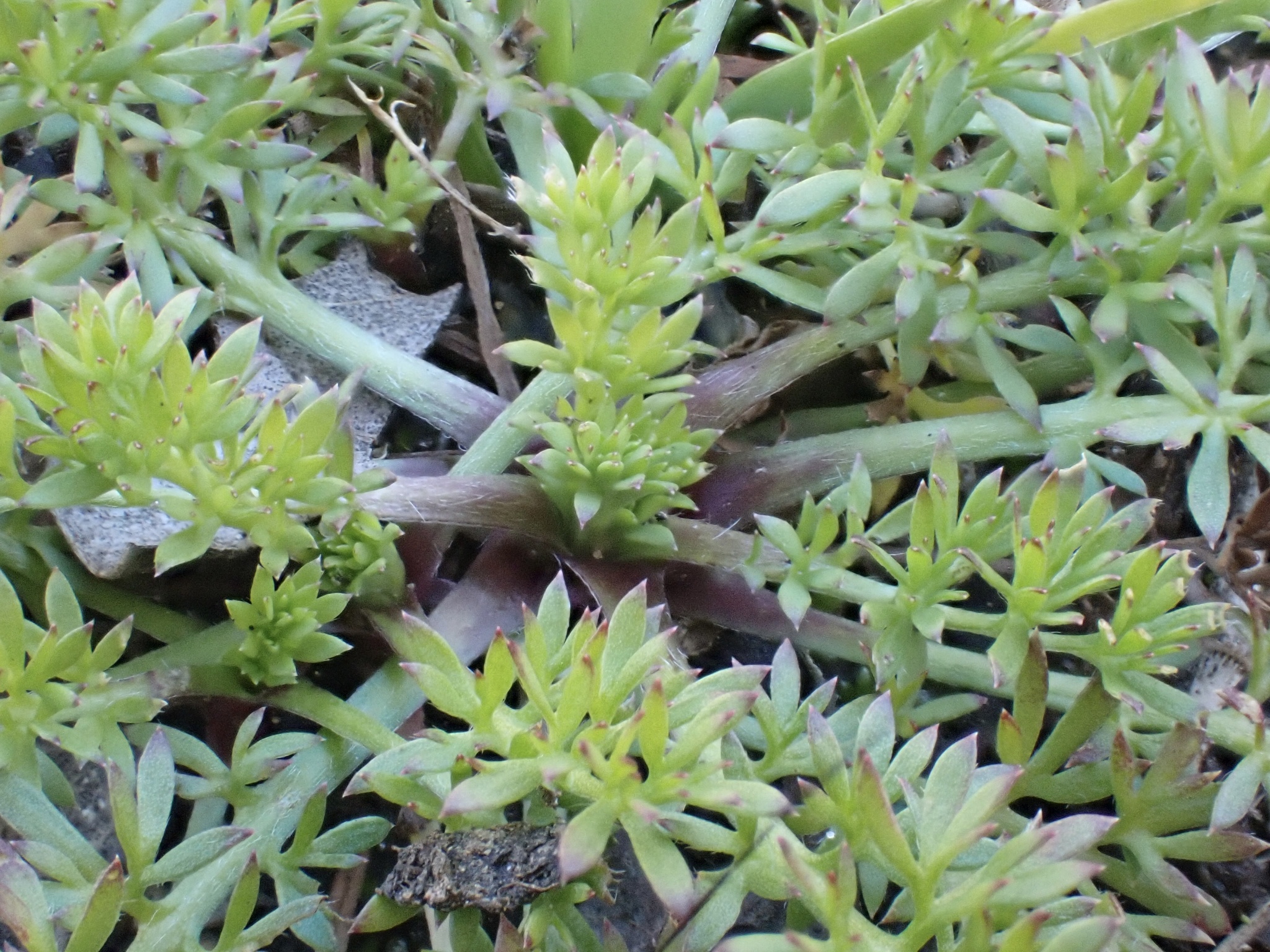 Massey University’s New Zealand Weeds Database calls it “probably one of the most hated turf weeds in New Zealand." |
Plants with large barbs or thorns, such as roses (Rosa spp.), may be best planted in parts of the garden where they won’t injure kids.
In some cases, “pointy plants” are also toxic. For instance, the phoenix palm (Phoenix canariensis), as shown above, has sharp barbs which can puncture skin and inject chemicals that inflame tendons and may lead to the need for surgery. Phoenix palms account for half of all hand operations in Aotearoa! (Phoenix Palm: Beware the Undercover Menace in Your Garden, 2019)
Plants that spread rapidly
Plants that spread rapidly may become weeds if you’re not careful, not just for you, but for your neighbours too.
Some plants have evolved to be very good at propagating or spreading, using one or more of the following methods:
- A spreading habit: spreading by sending out rapidly growing stolons or rhizomes, like couch (Cynadon dactylon, pronounced cooch), or quick-spreading vines like bindweed (Calystegia spp. and Convolvulus spp.) which also produces rhizomes.
- Wind dispersal: propagating extensively by seeds that are carried on the breeze, such as scotch thistle (Cirsium vulgare). The process of wind dispersal begins with the development of specialised structures on the seed or fruit, which are designed to catch the wind and carry the seed away from the parent plant. These structures can take various forms, including wings, parachutes, or tufts of fine hairs. Once the wind catches the seed, it is carried away from the parent plant and can be transported over long distances.
- Animal poop (endozoochory): Endozoochory is a type of dispersal in which seeds are ingested by animals, pass through their digestive system, and are then deposited in a new location through the animal's faeces. The fruit from karaka trees (Corynocarpus laevigatus) are eaten by native birds such as the kereru (New Zealand pigeon). The kereru ingests the fruit and passes the seeds through its digestive system, eventually depositing them in its droppings, aiding the dispersal and distribution of the species.
- Attaching to animals (epizoochory): Epizoochory is a type of seed dispersal in which seeds are dispersed by attaching to the external surface of an animal, such as sticking to fur, feathers, or scales, or by getting lodged in the crevices of an animal's skin. Some plants have developed hooked bracts for attaching to fur, while others use a sticky coating that adheres to the bodies of visiting insects. Onehunga weed seeds penetrate the skin of animals (including humans) and “hang on for the ride.”
|
Agapanthus (Agapanthus spp.) is effective at spreading due to its ability to produce large numbers of seeds and also through vegetative reproduction. They produce large, showy flowers on tall stalks that are attractive to pollinators such as bees and butterflies. |
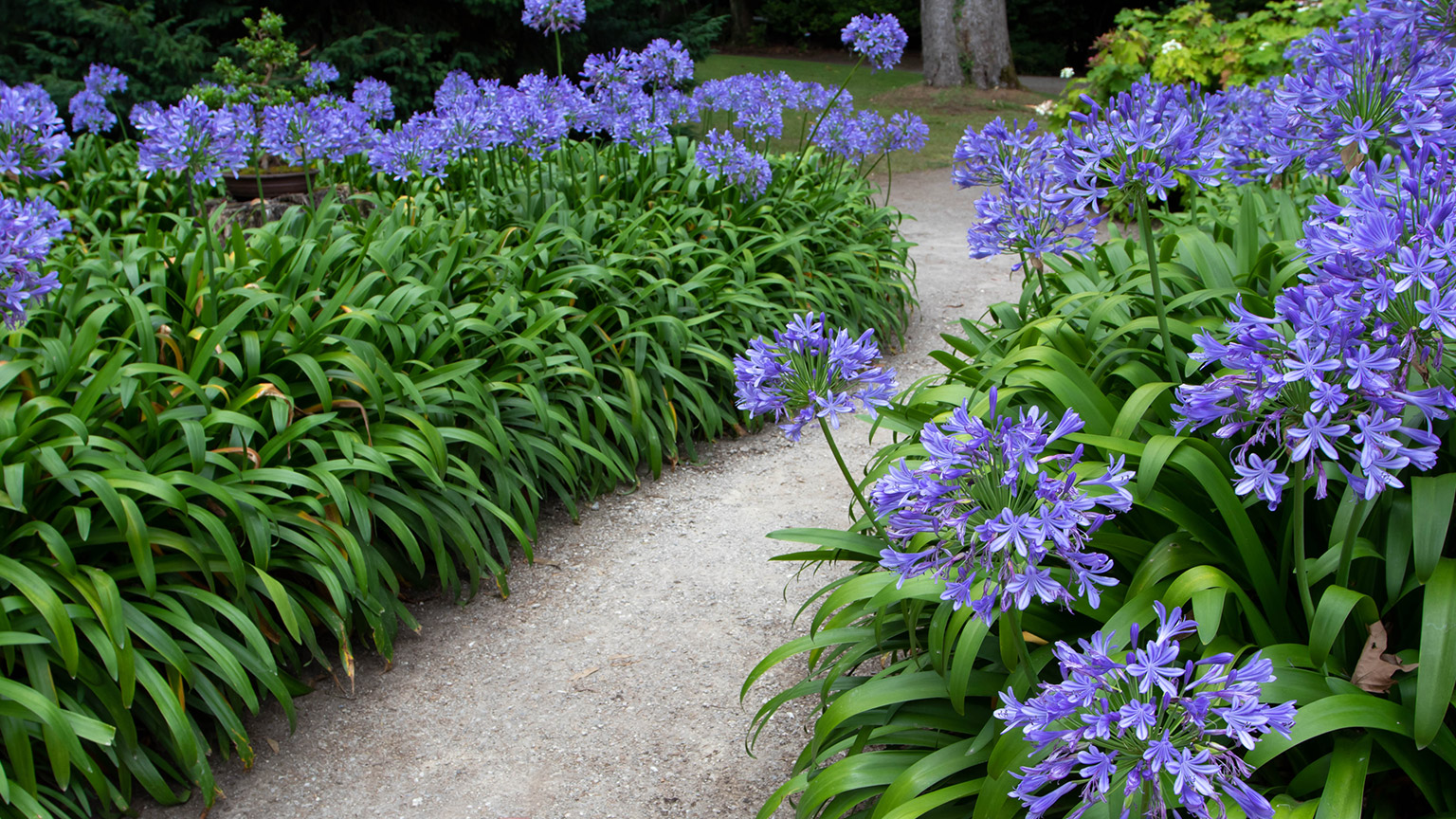 |
| After pollination, the Agapanthus flowers produce capsules that contain many small seeds. These seeds are lightweight and have a tuft of fine hair that helps them to disperse in the wind. | 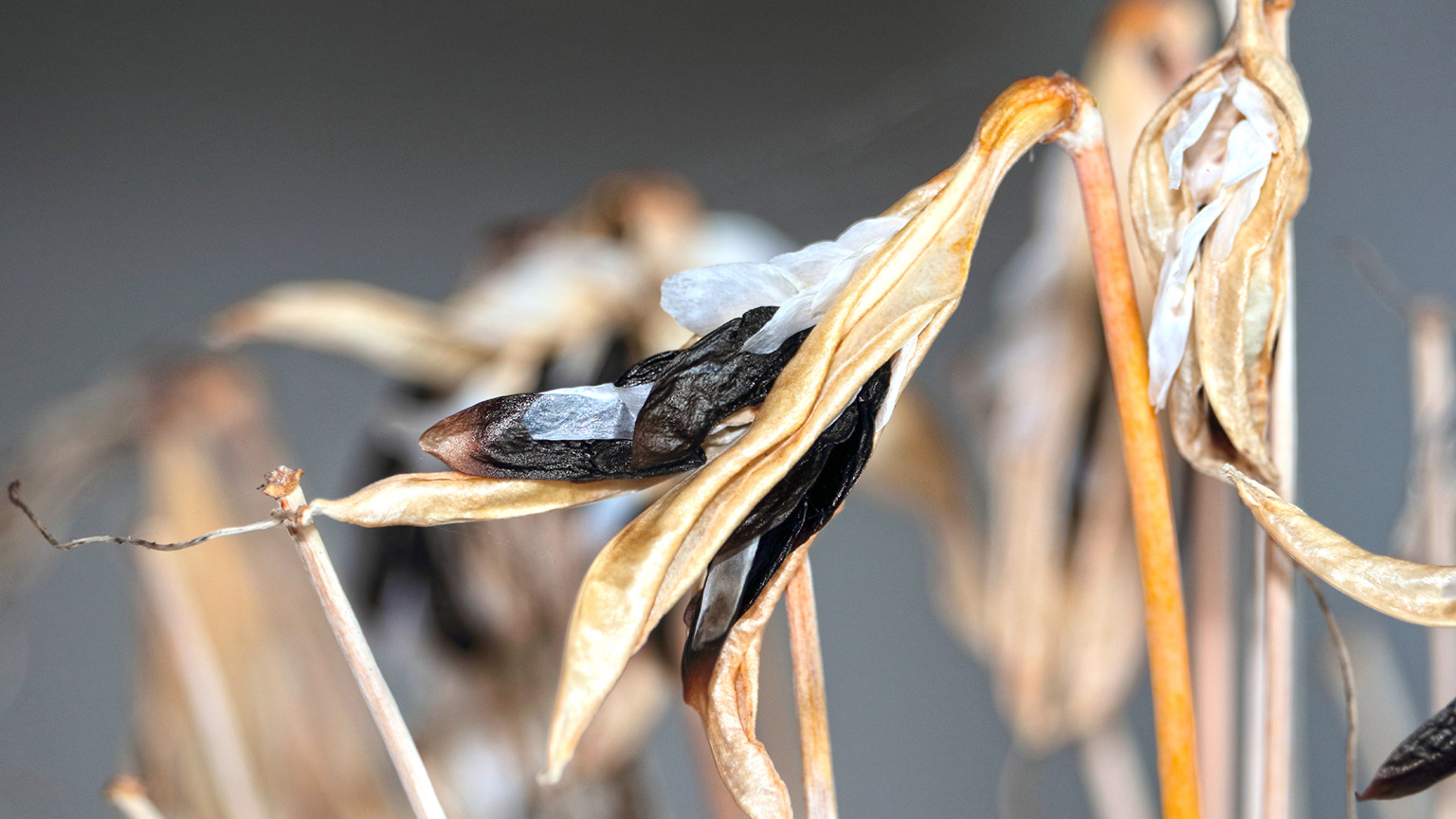 |
In addition to seed dispersal, agapanthus is also able to reproduce vegetatively through the production of offsets or bulblets. These small bulbs grow from the main plant and can eventually break away and grow into new plants. Agapanthus is also able to spread through rhizomatous growth, in which the plant produces underground stems that can grow into new plants.
Plants that smell bad
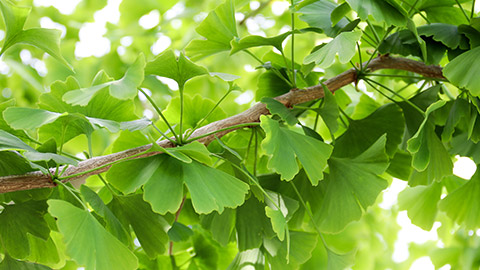
The fruit of the female maidenhair tree (Ginkgo biloba) is said to smell like rancid butter or vomit when it falls from the tree.
Wikipedia contributorsMany intentionally planted ginkgos are male cultivars grafted onto plants propagated from seed, because the male trees will not produce the malodorous seeds.
If you’re considering planting a gingko, we strongly suggest buying from a trusted grower who can confirm that the plant is a male.
Plants that attract undesirable animals
Some plants will attract undesirable animals, such as rats, mice, cats or pest insects. In some cases you might still choose to grow these.
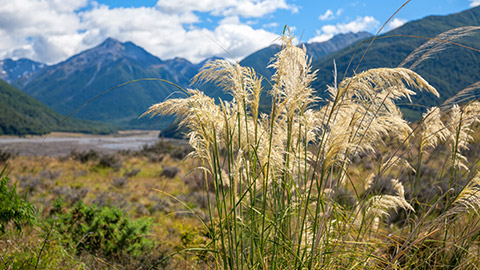
For instance you might choose to grow brassicas, like cabbages or broccoli, despite the fact that cabbage white butterflies will be attracted to them. Alternatively, you might decide against planting toetoe (Austroderia toetoe), shown above, as it is known to be a habitat for rats and mice.
If you decide to plant toetoe, make sure you’ve got the correct plant as it can be easily confused with two pampas grasses (Cortaderia selloana and Cortaderia jubata), which are pest plants. Check out this great blog post on the Department of Conservation’s Conservation Blog, by seven year-old Eden Fearnside: Pesky pampas! Not native toetoe.
Before we dive into weed control, let's review.
Activities – Weed identification
And try your hand at these two questions.
At the end of the day, the way you use plants or remove plants is entirely up to you as long as they are not illegal to cultivate. Do you agree with all of the judgements we made on these plants? Would they be different if we were managing a bowling green? Think about that for a moment and then expand the label below to learn more.
Plants that can disturb an area being used for prized grass cannot tolerate any clover or dandelion, so in those instances, it's a "bad" plant, and efforts would be made to suppress those and other threats to the health of the turf.
Earlier in the programme we described the following approaches to controlling weeds:
- tarping
- digging out
- spraying with herbicides
- tilling
- weeding
- edging.
In this subtopic we take a look at a few alternative approaches to weed control. These may not be suitable for your garden; however it is useful to be aware of these particularly if you are interested in getting a job in the horticulture industry. Additionally the size and cost of some of these commercially available tools are decreasing; becoming smaller and cheaper. It is likely that some will become available at a price and size suitable for home garden use.
Whatever approach or approaches you decide to use, apply the following principles:
- Kill weeds before they can propagate. Don’t give them the chance to flower.
- If at all possible, kill weeds when they are small. The smaller they are the easier they are to kill and the less time they will have had to compete with your desirable plants for water, nutrients and light.
Shock treatment
One way of killing weeds is to rapidly shock them in a way that makes their cell walls collapse. This can be achieved by:
The flame causes thermal shock which ruptures the cell walls. While it is not essential to completely burn the weeds, they need to have been heated for a second or more for the thermal shock to occur. Flame weeders come in a variety of styles, including a single wand or staff, and multi-burner wheeled versions that can cover the full width of an in-ground raised garden bed. Wand style flame weeders are useful for small areas, such as paths between garden beds, while wheeled versions are suitable for flame weeding large areas. This video by Home for Beginners provides a detailed demonstration of how to use a wand-style flame weeder and a hand-held blowtorch:
Like flame weeding, steam weeding creates thermal shock that kills plant cells. Steam weeding units are more complex than flame weeders, and therefore more expensive to buy, but are generally more efficient and don’t create the risk of fire. However, steam weeding does use a lot of water.
Steam weeding is being used in Ōtautahi Christchurch to control weeds in gutters and on footpaths.
Steam weeding equipment can also be used for cleaning and sanitisation of hard surfaces, such as playground equipment. The following video by Weedtechnics shows some of these uses, from the perspective of landscaping contractors; smaller steam weeding units are also available:
A third option is the use of electric current to create the shock that kills the plant. Different systems work in different ways. Some provide current directly to the above-ground parts of the weed which kill those parts of the weed. Others, create a return current by using an earth electrode as well as a wand/“zapper.” These ensure the electric current travels through the whole plant and boil the cells from the roots upward. This is a relatively new technology, so the equipment is still expensive and not easy to come by, however, it may become more popular in time. This video from Rootwave shows the use of electric weeding in controlling the pest plant Japanese knotweed (Reynoutria japonica):
We’ve already talked about controlling weeds by spraying them with herbicides, but there are a few other approaches if you want to use chemical weed control but aren’t keen on spraying:
|
Herbicide applicator Also called a weed wick or weed wand. This is essentially a stick with a brush or wick at the bottom and a tank to hold the agrichemicals. The tank delivers the herbicide to the brush or wick which is used to selectively paint weeds with the herbicide. |
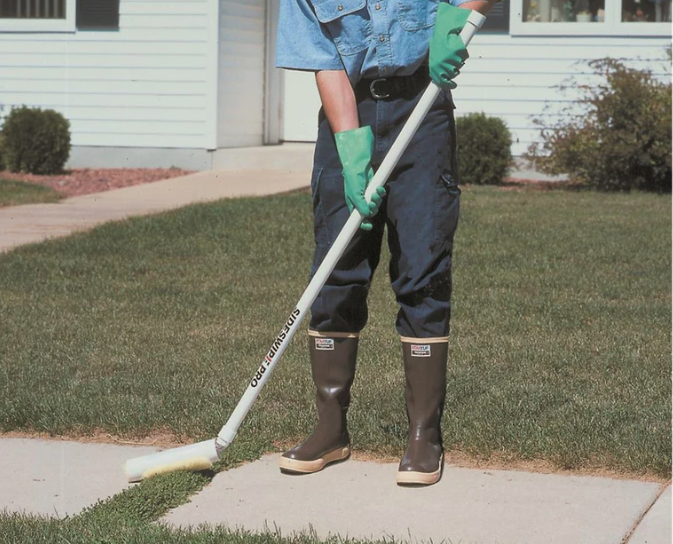 |
|
Salting Spreading granules of salt on weeds, or dissolving salt in water and then spaying the solution on weeds, is another effective approach. It causes the plant cells to dry out which interrupts key plant processes and kills the plant. It must be noted that salting the ground can make it sterile which means it will lose its soil food web and will prevent plants – weeds and desirables – from growing.
|
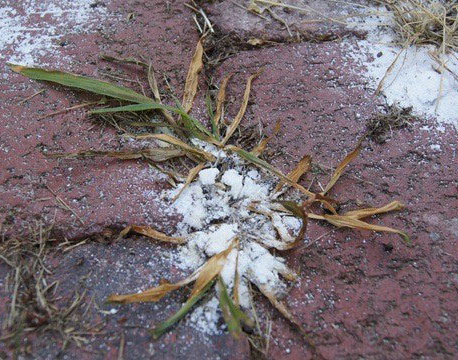 Only use this approach on areas that you do not want to grow in, now or in the future, such as gravel driveways or paths. |
